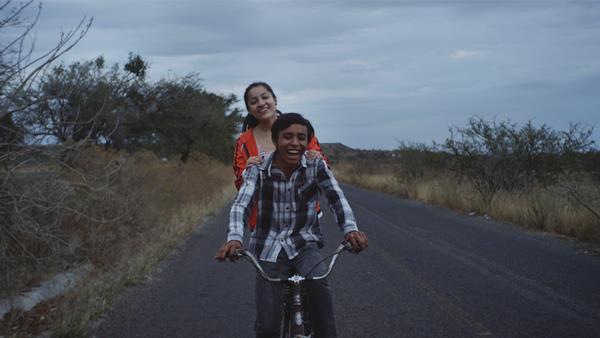
Ana (Regina Reynoso) and Lalo (Eduardo Banda) in The Gasoline Thieves (Juan Pablo Ramirez/Tribeca Film Festival)
The Gasoline Thieves is yet another film is about someone who chooses to step off society’s rails and into a life of crime. In this case, he is a middle school boy, and many, if not most viewers, should be able to relate to his reason for doing so: a crush. Effective and affecting, though a little routine, The Gasoline Thieves is likely to satisfy and scar many of its viewers.
The unnamed Mexican town where the film takes place is home to an underground and, for now, cop-condoned business of siphoning gasoline from pipelines to sell on the black market during the nationwide energy shortage. Lalo (Eduardo Banda), a 13-year old boy, plays a part in this crime ring without knowing it, for he helps Don Gil (Fernando Becerril) bring containers of gas to local farmers for extra money.
Lalo’s family is poor, his mother is single, his uncle is sick, and he is an outsider. He has no friends, and when he asks a classmate, Ana (Regina Reynoso), out, it goes horribly wrong. She and her friends laugh and educate him as to how he is supposed to act as a suitor. His main takeaway is that he needs a cool phone, or money to buy her things, and he also sees her running with harder boys, one of whom rides a motorcycle and steals gasoline. Lalo decides to join the gang of thieves, a choice that has consequences far beyond his imagining.
The above is ultimately the bare bones of the story, and it is to director Edgar Nito’s credit that he juggles the film’s many elements with an unflagging pace. The plot is fairly Aristotelian: we can see disasters looming in the distance, even when Lalo’s fortunes rise, though we are unsure of exactly what they will be and how they happen. The world is developed with subtlety and depth, but the cards are stacked against everyone.
Sometimes the film moves into startling visual territory—there is a recurring motif in which people at night are essentially seen by rim light. Most of it is straightforward and naturalistic, giving us a clear-eyed view of the impoverished world that the characters inhabit. This is mostly a strong approach.
If the story sometimes feels like well-worn territory, the material is made much more poignant since it stems from the yearnings of that most uncomfortable period of life: early adolescence. Lalo has no strong sense of self; he takes cues from his surroundings as to who and what he is supposed to be. What middle schooler doesn’t? Fascinatingly, he is not the only one who is awkward around women. Rulo (Pedro Joaquín), ostensibly Ana’s boyfriend, is clueless in a different way. He is pushy and unable to understand why she doesn’t really like it. In one sequence, Rulo watches a stripper, and as he sits in the audience, he looks anxious and awkward, not unlike Lalo in different circumstances.
It is the yearnings and insecurities of its characters that drive the film to its cataclysmic end, which made me sit up straight—and I won’t ruin it for you.






Leave A Comment